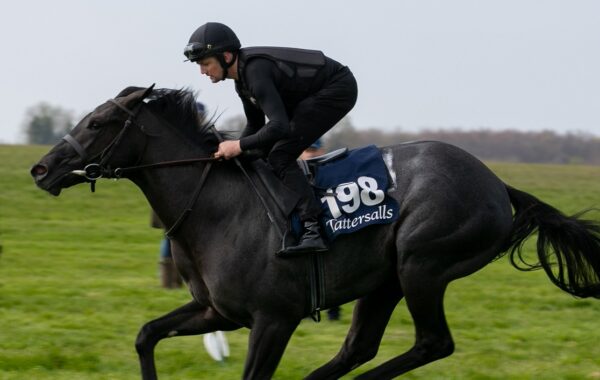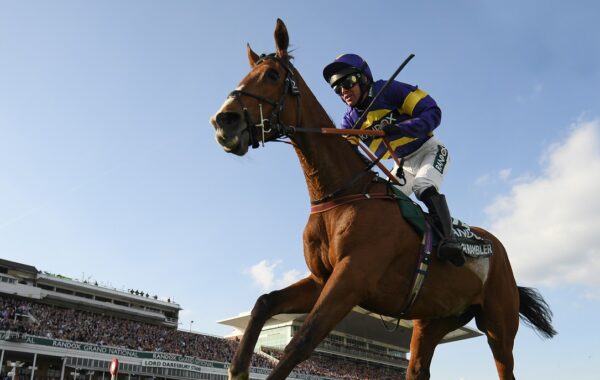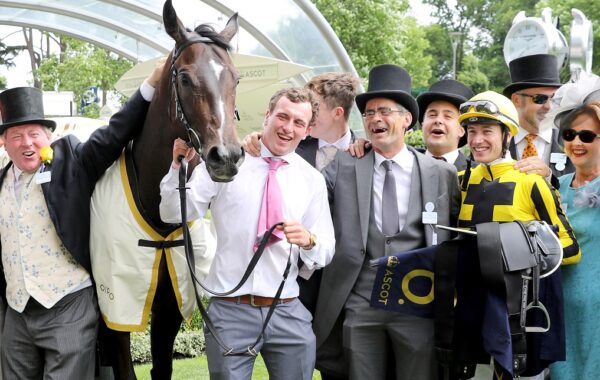Germany’s stallion ranks have been in dire need of a shot in the arm for some time now, but the problem suddenly became more acute in April when the country’s newly crowned champion sire Adlerflug collapsed and died shortly after covering a mare.
Leading sires Areion and Soldier Hollow were still in service this season, but they are rather long in the tooth at 26 and 21 respectively. Younger names have struggled to establish themselves, and the only chance left for the mighty and much-missed Monsun to forge a sire-line at home is through Protectionist.
German breeders needed a saviour and, if the evidence from this year’s Deutsches Derby and Preis der Diana is anything to go by, it might just have arrived in the big, burly and bright chestnut form of Isfahan.
The first crop of three-year-olds by the former Deutsches Derby hero contains the clear-cut winner of this year’s renewal of the Hamburg Classic, Sisfahan, as well as the gallant runner-up in the Preis der Diana, Isfahani. Father, son and daughter are all owned by Darius Racing.
The increasingly influential operation is owned by Dr Stefan Oschmann, the recently retired CEO of science and technological giant Merck, and managed by the astute young bloodstock agent Holger Faust, whose parents Bruno and Michaela own Gestüt Karlshof – renowned breeders of Classic-winning siblings Salve Regina, Samum and Schiaparelli.
“German breeders needed a saviour and it might just have arrived in the form of Isfahan”
“Dr Oschmann and I met at Gestüt Karlshof back in 2013, and we decided to work together,” explains Faust. “Darius Racing started in 2014 and success came pretty fast, with Isfahan winning the German Derby in 2016. It was champion owner in Germany that year and in 2019, and it might very well be so again this year.
“Darius Racing now has roughly between 20 and 25 horses in training, and most are with Henk Grewe, although we also use Andreas Wöhler, Andreas Suborics and Waldemar Hickst.”
Only seven years after the operation was represented by its first runners, it has campaigned not only the Deutsches Derby victors Isfahan and Sisfahan, but also two other top-level winners in Donjah and Khan, a German horse of the year in Rubaiyat and a host of stakes scorers headed by Alounak, Parvaneh and Wasir.
It also seems to have the magic touch with mares, as its small-scale breeding offshoot Anahita Stables managed to produce last year’s Grosser Preis von Bayern winner Sunny Queen from its first crop.
The four-strong Anahita Stables broodmare band were bought to support home stallion Isfahan, who was retired to Gestüt Ohlerweiherhof at the end of his racing career.
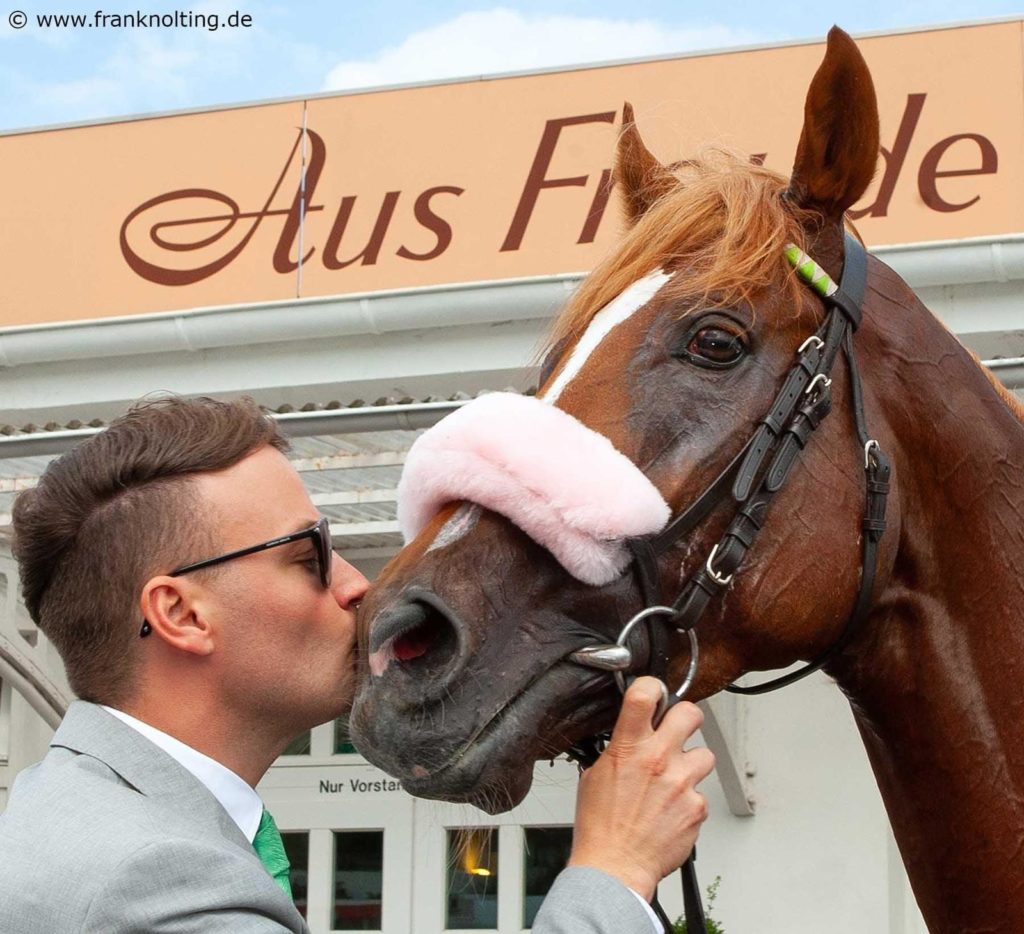
Bloodstock agent Holger Faust with Isfahan’s Deutsches Derby winner Sisfahan
Recalling how he bought the son of Lord Of England for just €35,000 as a yearling in Baden-Baden, Faust says: “I really liked the sire and that was back in the days when he had only one Classic winner with Feodora in the Diana; he now has four thanks to Isfahan himself, this year’s Preis der Diana winner Palmas and the St Leger winner Near England.
“His stock were always very consistent and honest, and I’d compare him a little with Kendargent, who also had lots of really good horses but had to wait a long time for a truly outstanding one like Skalleti to come along.
“Lord Of England’s yearlings were less expensive to buy than Kendargent’s, of course, and Isfahan was just a nice, strong individual; you could tell he would grow to become a big horse, which he did – he measures 169cm tall [a little under 16.3hh].”
Isfahan made good use of his strapping physique. Trained by Wöhler and carrying Darius Racing’s green silks with pink sleeves, he stormed home to win Germany’s most prestigious two-year-old prize, the Preis der Winterfavoriten, to be named the country’s juvenile champion.
He landed a Group 3 at Munich in good style on his three-year-old debut and then headed to Rome for the Italian Derby, in which he was sent off a short- priced favourite. However, the ground was too firm for him that day and he could finish only fifth. To add injury to insult, he sustained minor damage to a hoof in the process.
Isfahan was given a two-month break after his fruitless trip to Italy, and came back with an admirable staying performance to win the Deutsches Derby. Having taken up the running soon after the home turn, he galloped on relentlessly in bottomless ground to see off the challenges of the high-class pair Savoir Vivre and Dschingis Secret.
Soon after his Hamburg heroics he suffered a recurrence of his foot injury, which forced his early retirement to stud.
“In my opinion, he made for the complete sire,” says Faust. “He was a champion two-year-old and had shown a good turn of foot to win our most important juvenile race, and then at three he became a Classic winner by showing amazing fighting spirit.
“The sire line had improved and his half-brother Incantator had won a Group 3 race, and he was an imposing physical – tall and strong, not like other German stallions like Soldier Hollow and Adlerflug, who have of course been very successful but are, or were, much smaller models.”
So far, so good. But not everything went to plan in the early stages of Isfahan’s stallion career.
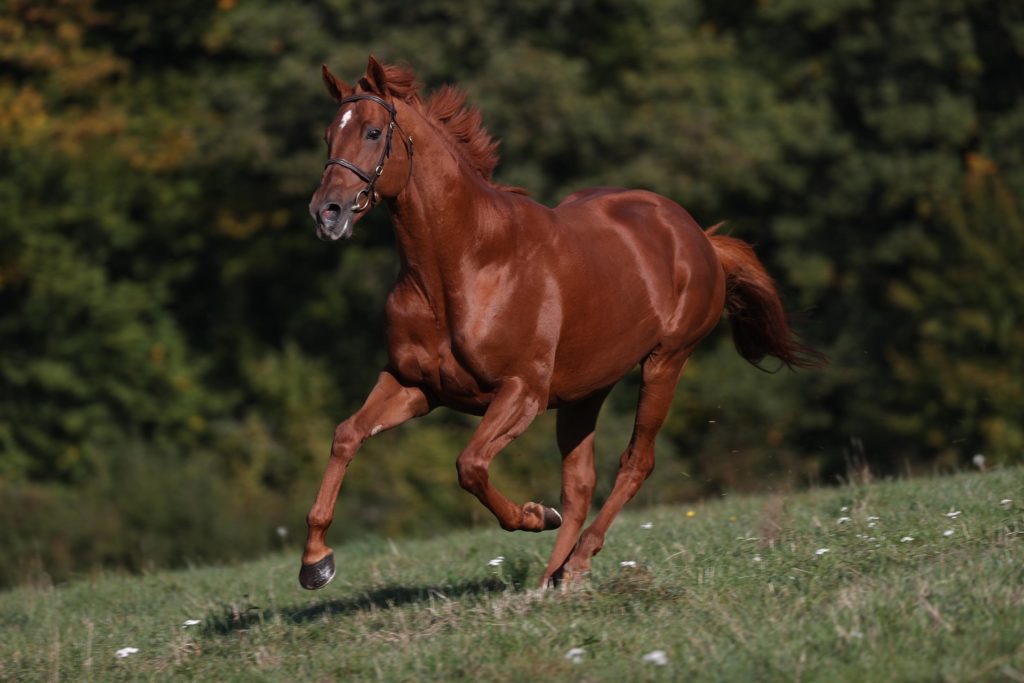
Isfahan: stands at Gestut Ohlerweiherhof
“We wanted to support Isfahan but didn’t want to become the biggest breeder in Germany, so we tried something new,” says Faust. “We bought 30 or 40 mares with nice pages but without good race records in order to get value for money, and covered them with Isfahan before bringing them back to the sales at BBAG and Arqana.
“The idea was to give smaller breeders in Germany and France the opportunity to save money by getting a mare with a nice page, and we tried that for two seasons, but then we stopped for the reason that it simply did not work at all, full stop.
“Nearly all of the mares ended up in countries without established racing programmes. Turkey was perhaps the most advanced but the others went to Libya, Kazakhstan, Uzbekistan and so on. That was 100 per cent not what we wanted.”
So Isfahan was in the strange position of having appeared to have covered large books in his first two seasons, but producing only small crops in the countries that mattered for making his name as a stallion.
“The result was that he sired only between 25 and 30 foals in Germany and France in each of his first crops,” says Faust. “With that in mind I’m even more proud of the fact he has managed to sire Isfahani and Sisfahan.”
To an outsider looking in, it seems odd that Isfahan wasn’t granted more mares by other German breeders, but Faust explains that it is understandable in the context of the country’s breeding scene.
“In his first four years he was given no chance by German breeders, but I don’t blame them at all because that’s the way the business here works,” he says.
“Owner-breeders want to go to the proven stallions like Adlerflug, Soldier Hollow or Areion because they know they’ll get a good racehorse – that’s absolutely fine, we do the same – and commercial breeders want to go to France, Britain or Ireland to get mares covered, because if you look at results from the BBAG Yearling Sale, around 55 to 65 per cent of the horses are sold outside the country.
“There are only around 1,000 mares in Germany that get covered every year, and there are a lot of stallions for that small number, so it’s tough work to get a new stallion going.”
Faust reports that Isfahan was in more demand this year after being crowned Germany’s leading first-season sire of 2020 against unusually tough competition that included Protectionist, Ito, Lucky Lion and Guiliani. Patrons included one of the country’s foremost breeders, Gestüt Wittekindshof.
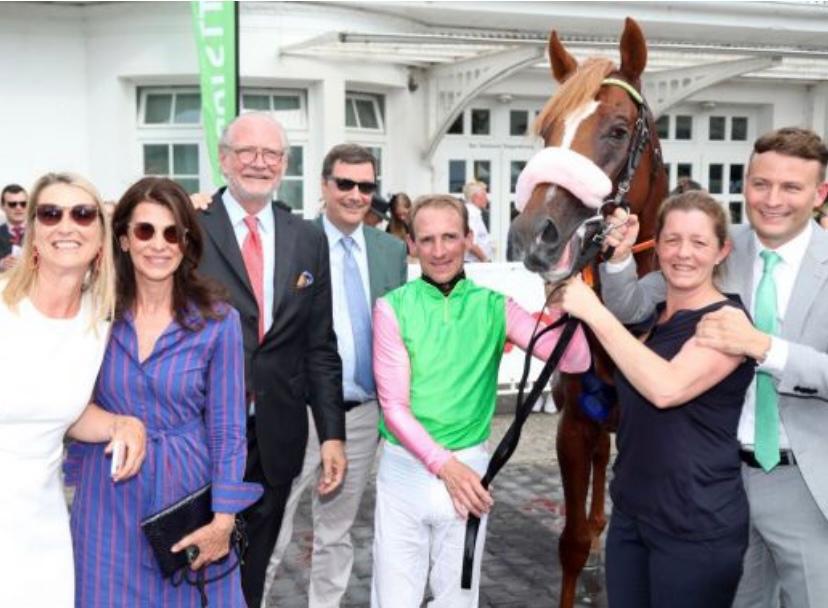
Connections celebrate after Sisfahan’s German Derby victory
The Fausts themselves also sent 12 out of their 34 mares from Gestüt Karlshof, “as we could sort of see what was going to happen this year,” says the agent.
One rare international breeder who did believe in Isfahan in his early days at stud was Guy Pariente, the visionary who single-handedly transformed Kendargent from an obscure Group 3 place-getter into one of France’s leading sires from his base at Haras de Colleville.
He sent the stallion his Kendargent mare Kendalee, a winning hurdler and chaser, and was rewarded by breeding Sisfahan.
Explaining how the arrangement came about, Faust says: “I’m a big fan of Kendargent, and also of the breeding of Mr Pariente, and one day we met in person and decided to do more business together. He said if I ever had an interesting project, I should count him in.
“So when I came to syndicate a nice Dalakhani colt bred by Gestüt Karlshof called Jimmu, I asked him if he wanted to be part of it, and he did. The horse did a good job, winning a race and running seventh in the German Derby, and we got him sold to Hong Kong for a fair price.
“Around that time, Mr Pariente called to ask me which mares I was planning to send to Kendargent in the coming breeding season. I said this and that, and asked him what he would be sending to Isfahan in his first year? He said he liked the horse when he saw him winning the Derby, so why not? He’d send a mare.”
The result of the mating between Isfahan and Kendalee was sent as a yearling to the Arqana Autumn Sale, better known for its National Hunt offerings. Faust had filled his orders for Darius Racing that year, but he did a deal for the colt outside of the ring with €16,000 the price agreed for friend Christoph Holschbach to own half with Pariente.
Sisfahan entered training with Grewe, who saddled him to finish second and to win in two starts in the French provinces at two. His Classic campaign was delayed by an infection he had contracted over the winter, and by the early part of this summer Holschbach and Pariente had each decided they were happy to part with the horse, allowing Darius Racing to step in and buy him.
“We made a really good offer, especially considering he was a horse who had run only twice at two and not yet run at three by late May,” says Faust. “He was meant to go to France for his comeback but we asked the trainer to scratch him and send him to Dusseldorf instead. He was a little headstrong on his first start after a long break but he was much sharper in the Derby and won well against a strong field.”
Plans call for Sisfahan to take on his elders in the Grosser Preis von Baden in early September, although he might be redirected to the Grand Prix de Deauville on the weekend beforehand.
So highly thought of is his stablemate Isfahani, bred by Gestüt Karlshof and bought by Faust for Darius Racing at €36,000 in Baden-Baden, that she has the same choice of races on her agenda.
“Isfahani was lucky last year to create history by becoming the first German-trained horse to win a Group race on debut, as she finished second in the Premio Guido Berardelli but was awarded the race in the stewards’ room,” says Faust.
“But this year she has turned out to be quite unlucky. She went for the Italian Derby first time out, just because she’d shown so much class at home, but she lost a shoe directly after the start and a horse struck into her, and she picked up an injury after the race.
“On her next run in Hamburg we chose the wrong tactics with her, as she likes to gallop on but she was ridden for a turn of foot, and she ended up in the middle of nowhere with no other horses and no rails to help her. Everyone was looking at us asking what we saw in her at home. It was a little bit embarrassing, but we knew what we had and didn’t worry.
“As for the Preis der Diana, the track at Dusseldorf didn’t suit her at all. She’s very tall, like her father, and masculine- looking with a big action, so she couldn’t handle the tight bends and she lost position. By the time the jockey got her going, Palmas had flown. She will be better over 12 furlongs next time.”
It’s worth noting that fifth behind Palmas and Isfahani that day was yet another Darius Racing-owned Isfahan three-year-old in Anoush, and she, like Sisfahan, boasts Kendargent as broodmare sire. Food for thought for owners of Kendargent mares on the continent, perhaps.
The rise of Darius Racing has not only showcased Isfahan’s potential as a sire of great importance, but it has also shone the spotlight on Faust’s talent for finding stars for bargain sums.
“When I go to the sales, I don’t even bother looking at the Galileos and Dubawis as they’ll be out of my budget,” he says. “The most expensive yearling I’ve ever bought was a Sea The Stars filly who cost €220,000, and before that I’d never spent in excess of €200,000.
“There’s a lot of sire-power responsible for so many big-race winners every year that’s simply out of reach to me.
“So I have to look at the progeny of lower to middle-market sires, and yet I’ve still bought many good horses, so I’m pretty proud of that.
“I just hope one day someone comes up to me and says, ‘I like your work, I’d like you to buy more expensive horses for me!’”



